The year 2020 will be remembered as a time of economic prosperity, followed by downturn and hardships that none of us ever imagined, as we dealt with global pandemic and social issues causing deep divides and civil unrest. Many watched their life savings disappear as they weathered the storm of closed businesses, loss of jobs, and for more than 575,000, loss of life itself! Our hearts hurt over social injustices played out over and over in prime time and on the internet, causing frustration and anger to manifest itself into sometimes angry mobs who pillaged and burned the property of the innocent. We can only hope that the rest of this decade and the coming one will not be the same.
This was not the case in the last century, particularly in Northeast Louisiana and the surrounding area, where extreme economic hardship, loss of life, and widespread destruction of property plagued the area all through the 1920s and 1930s as Jim and Etta Mae were raising their large family.
Jim’s businesses had begun to pay off, and he bought some lots and a house on the Ouachita River south of West Monroe. He set up a saw mill there and had O.D., who was seven years old, helping him float logs down the river to Brown Paper Mill. Although he continued to hunt, trap and fish, and sell whiskey, he had also entered into a partnership with a local businessman, Howard Griffin, in a small engine machine shop located on S. Grande in Monroe, which would later become a major business in the area.

Howard Griffin’s store 1940s 
Jim fixing outboard motor 1930s
By the summer of 1925 they had six children under the age of nine, Nita, O.D., Oliver, Derwood, Carrie Mae, and John A., filling their house with the constant movement and sounds of children playing, or crying for their needs to be met. Birth control and prenatal care was virtually nonexistent in the area at the time, and Etta Mae relied solely on her family and friends for advice and guidance. She may have seen a public health nurse sometime during her early pregnancies, but had her mother, and possibly a midwife with her during the birth for her first five or six children. In later years, with her younger children, she was under the supervision of a doctor, but continued working hard throughout all of her pregnancies, giving birth to every one of her children at home.
Under Etta Mae’s care, the family thrived and their days were filled with household chores, and church on Sundays, though Jim seldom attended. Their house was likely similar to many of the other frame houses in south West Monroe at the time, having minimal electricity, hand pumped water, and a wood stove. Clothes and dishes were washed by hand, and so were the children. (Reader’s Digest)
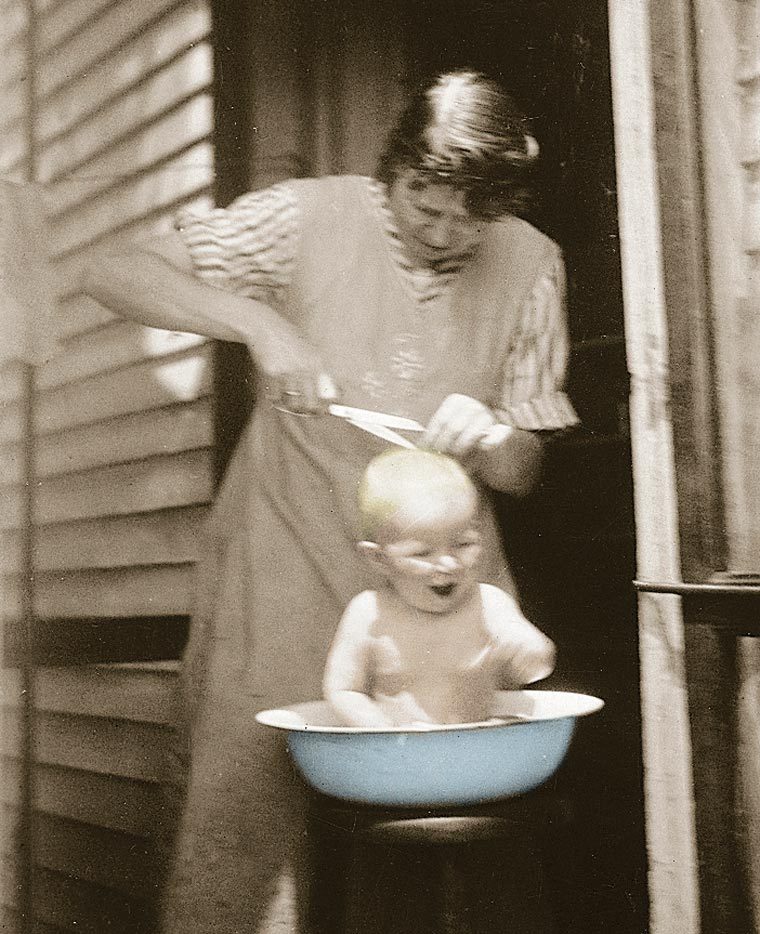
home bath and haircut 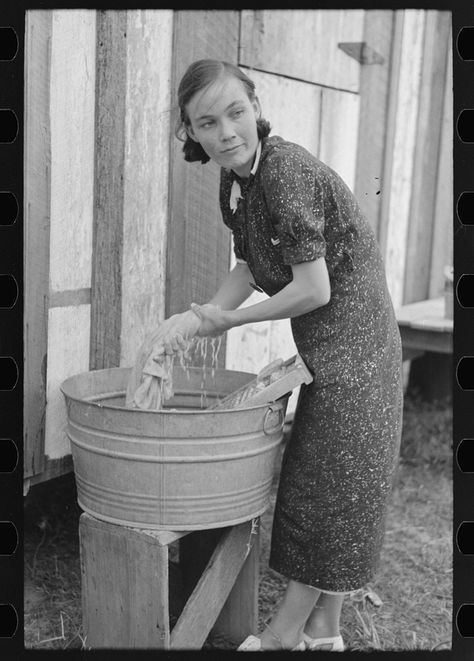
laundry by hand 
kids were washed in laundry tubs
There was a paved street, Old Trenton, and the grocery store, pharmacy, and churches were within a mile or two. Her mother had remarried and had another child the same age as Oliver, and she would sometimes take the children there on Sundays to play, although it was not an easy task.

Granny Hart and her second husband with their son, O.D. Hollingsworth, Jr. 
Typical 1930 kitchen 
1930’s crib
They lived on the banks of the Ouachita River in a yellow house on Old Trenton St., north of Brown’s Paper Mill when the rains came. Unusual amounts of rainfall fell from August 1926 through May 1927 all through the Mississippi River Valley from Louisiana to Illinois causing the Mississippi River to rise higher than ever recorded before. By December 1926 towns in Kentucky, Arkansas and Tennessee were flooding because of the constant rain, and all bodies of water in Ouachita Parish and surrounding areas were full, but the rain kept coming. Jim and Etta Mae’s house was in one of the lower areas of West Monroe and close to the river near the sawmill operation. (Wikipedia)
The first levee broke on April 16 in Illinois, then another followed in Mississippi on April 21. This caused a domino effect where essentially the whole levee system started to collapse. Even before this happened, water was covering the streets in the area of West Monroe where they lived, and was up to the porch on many houses. (The News Star) After the levees broke, the Mississippi River flooded more than 23,000 sq. miles of land along its banks and was reported to be as much as 75 miles wide in some places. This created one of the worst natural disasters in the history of the United States, one that affected Louisiana greatly. (Britannica) “A sheet of water up to 15 feet deep in places covered such northeastern Louisiana towns as Lake Providence, Tallulah, Delhi, Winnsboro and Mer Rouge,” the News-Star-World reported in a 1981 retrospective. Ouachita Parish resident, Sitty McNeil, remembered what her husband shared, “You could get in a boat out here on Bayou DeSiard where the Edgewater Dam is . . . where the bayou comes close to DeSiard Road . . . you could go clear to Mounds, Louisiana, just pass Tallulah . . . except for Mason Ridge in Richland Parish” (McNeil 1993).

West Monroe flooded 1927 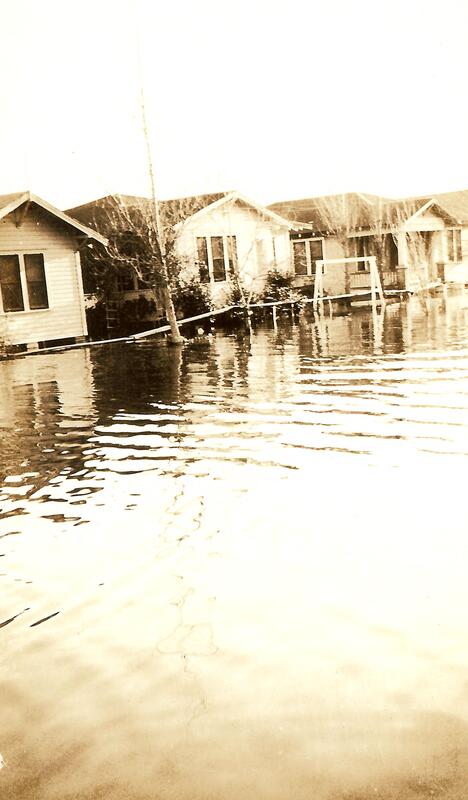
Flooded homes 1927 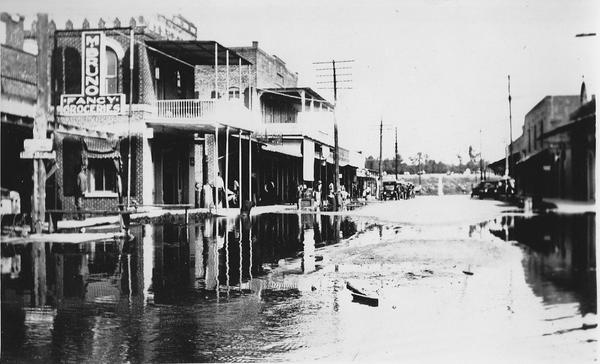
Downtown St. Joseph 1927
A detailed description of the devastation appeared in a July 1927 issue of the Tensas Gazette newspaper in St. Joseph written by Dr. Henry M. Payne, an engineer traveling through the flooded areas. “The crest of the flood carried 19 times the force of Niagara Falls and brought the level of the water 4 ft. above all previous records, with a rushing torrent of 3,200,000 cubic ft. per second sweeping everything movable, and much that was considered immovable, before it………. These waters approaching with such force have wiped out village after village, plantation after plantation, homes, churches and schools………Not a living thing remains – not a car or a dog, a chicken or a pig; cows, horses and mules, alike, have been drowned, or escaping to isolated knolls have starved to death or been shot to put them out of misery…………..Decaying bodies of domestic animals hang putrefying in trees and hedges, unapproachable for weeks until the water has slowly receded and dried up and the jelly-like quagmire becomes stable. These sources of pollution to health and drinking water can neither be buried nor burned, until the forces of sanitation and rehabilitation can advance. “
It was to this devastation that thousands of families in northeast Louisiana returned after spending as much as a month in Red Cross relief camps located in higher areas such as Harrisonburg, Bastrop, and Ruston. Considering the location, Jim and Etta Mae’s house probably had as much as a foot of water in it, and the sawmill as well, with most of the cut lumber floating away. They relocated to the White’s Ferry Rd. area and higher ground, where Jim’s dad, Charley Willhite, operated White’s Ferry across D’Arbonne Bayou, and his younger sister Alice White and her family lived. When the waters receded, Jim continued to run the sawmill, fish, sell whiskey, and hunt and trap to support the family. They moved back into the yellow house for a time, since the lumber business was good for a while with people needing to rebuild after the flood. But any upswing in business was short-lived with more miseries to come, with a second flood in 1932. Glen remembers, “When the depression hit 1929, they say he had more than a million feet of lumber on the yard and couldn’t sell it all, had to leave some of it there when he moved to Tensas.”
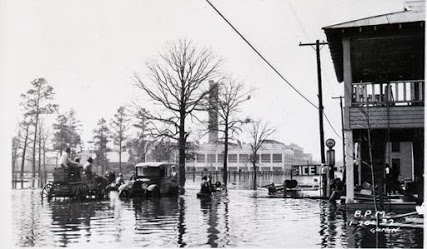
1932 flood near Brown Paper Mill in West Monroe
The beginning of The Great Depression in the United States is recognized by most as the stock market crash of October 29, 1929, otherwise known as Black Tuesday. It marked the beginning of eleven years of misery where unemployment reached as high as 25 percent, countless businesses failed, and thousands of acres of farmland fell to foreclosure. Human suffering and deprivation was widespread, in cities and small towns across the country where people did not have homes or enough to eat, forcing some to give up their own children, or send teenagers away to look for work. (Britannica) In the Monroe/West Monroe area, witnesses report that Newspaper headlines were full of Franklin Roosevelt’s New Deal programs including relief for farmers, CCC camps employing young men, and pictures of breadlines for the unemployed. Some eyewitnesses remember….”The freight trains coming through with the hobos. If there was a boxcar with an open door, you could see a bunch of hobos riding. They could also ride underneath the passenger trains. They called that riding the rails . . . I can remember people coming to our door asking for food as they bummed their way through the country. (Lancaster 2009, Louisiana Folklife article by Betty Jo Harris.)
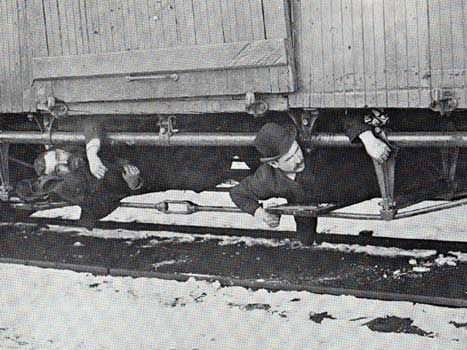
Riding the rods 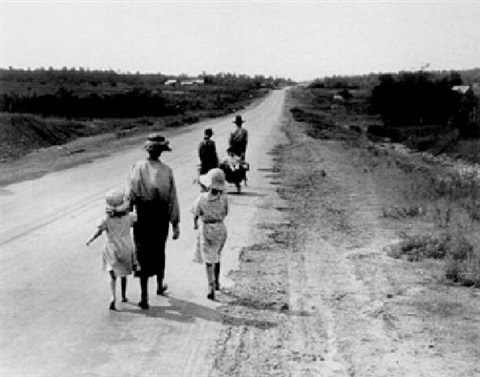
Homeless family 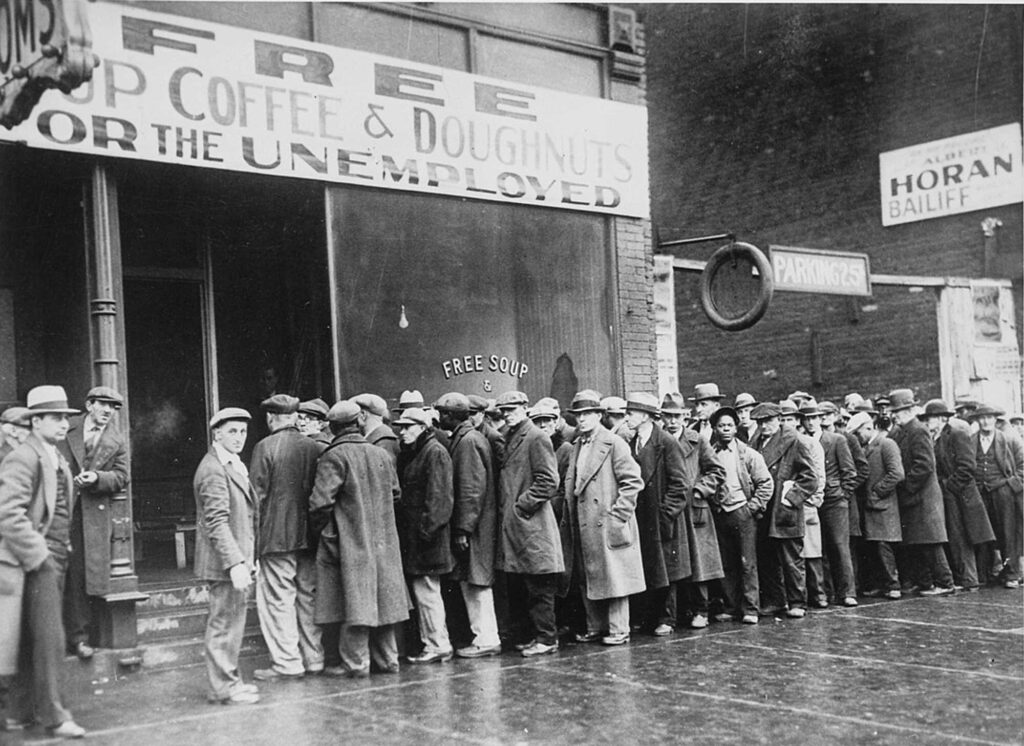
Bread lines
http://www.reevesmachine.com/blog/index.html
https://www.pbs.org/wgbh/americanexperience/features/dustbowl-great-depression/
In July 1927 Etta Mae gave birth to James Martin, Jr. (Jimmy), then by the end of 1931, she had Gustal Bartz (Boots), and George (Tut). The family kept growing, but their income was headed in the opposite direction. People were trying to recover from the floods of 1927 and 1932 which was actually worse, businesses were failing , and there was less money for people to buy lumber, fish, meat or whiskey. Jim and Etta Mae sometimes traded what they had for flour, medicine, clothes and other essentials. Like other rural families, they fared better than those in the cities. By growing their own garden, keeping chickens, and relying on their families for help, everyone struggled together, but managed to get by. Jim was still making and selling whiskey and the fur buyers were still buying, and he began to expand his trapping business on the Tensas River.
It was during this time that they got behind on taxes and other obligations, causing them to lose their lots where the sawmill was located, and the property sold at a sheriff’s auction by 1935. (The News-Star) Countless farmers and business owners across the country found themselves in the same situation with the Great Depression gripping the land. Families did whatever they could to survive, praying for the strength to hold out, holding on to the hope of better times which were painfully slow in coming.
“It will be as though a man fled from a lion only to meet a bear, as though he entered his house and rested his hand on the wall only to have a snake bite him.
Amos 5:19

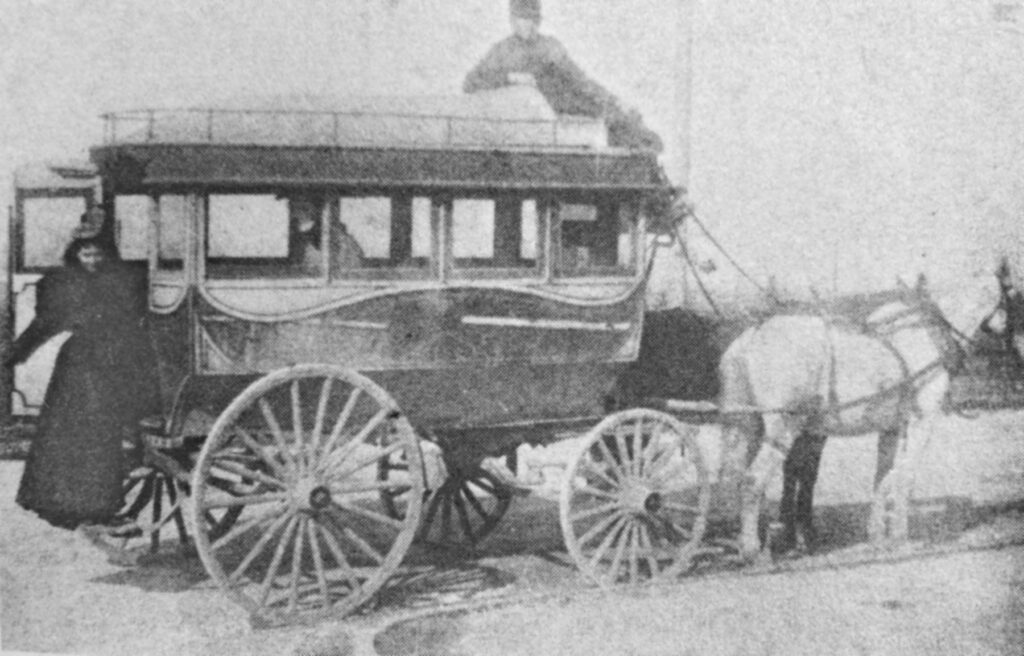



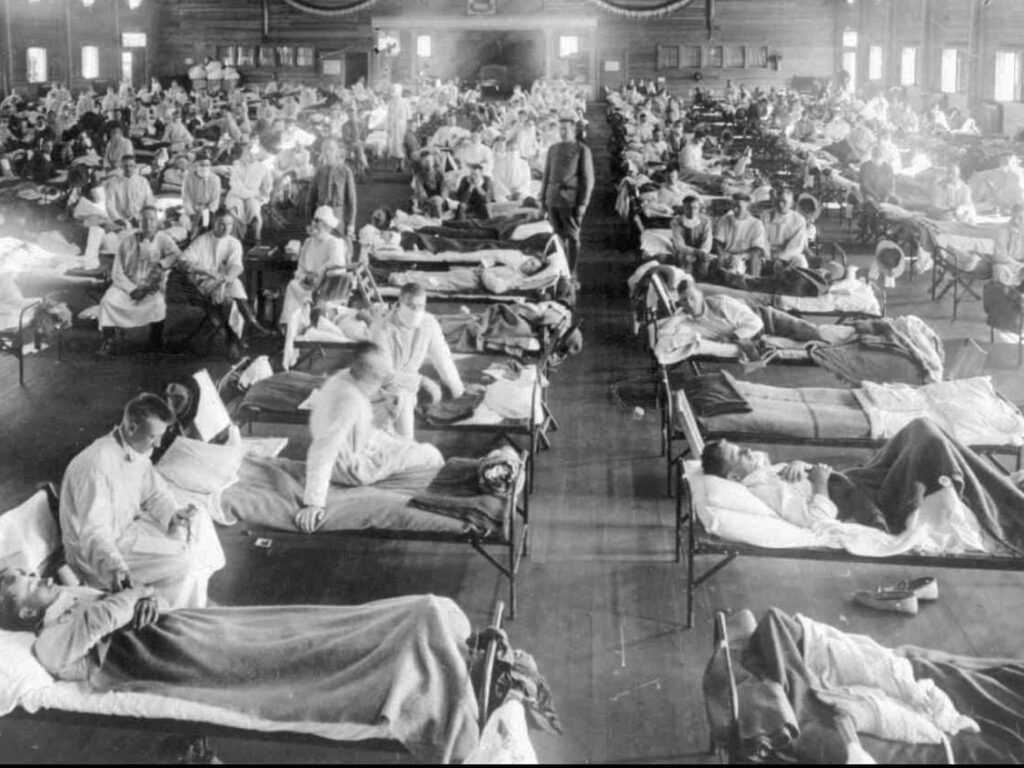
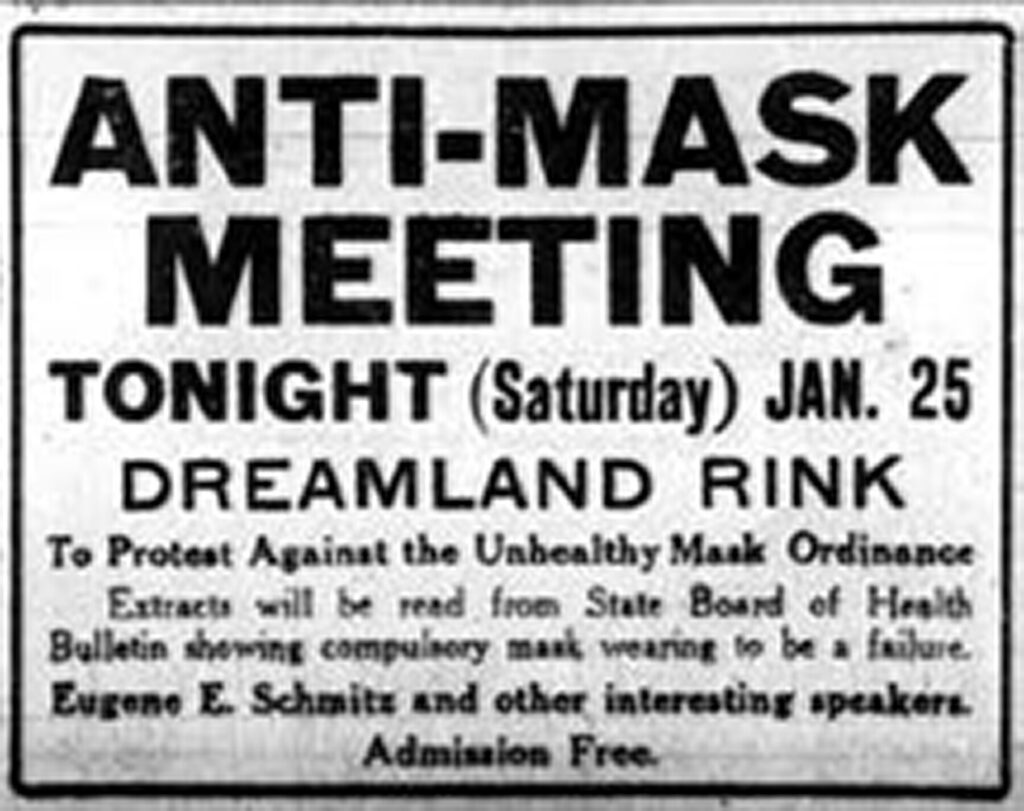
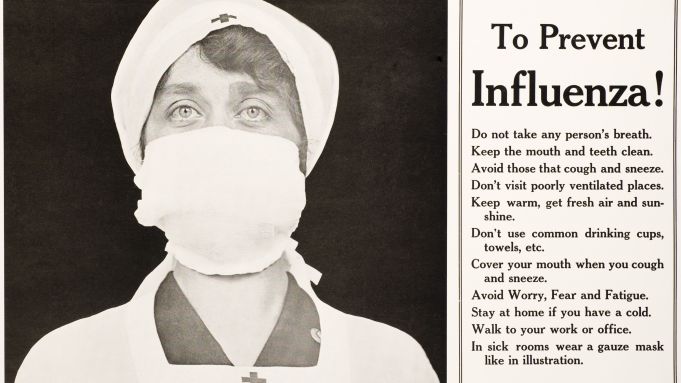
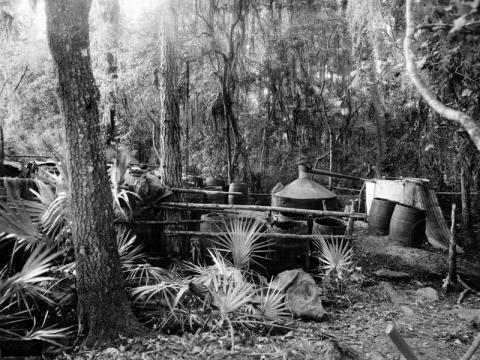
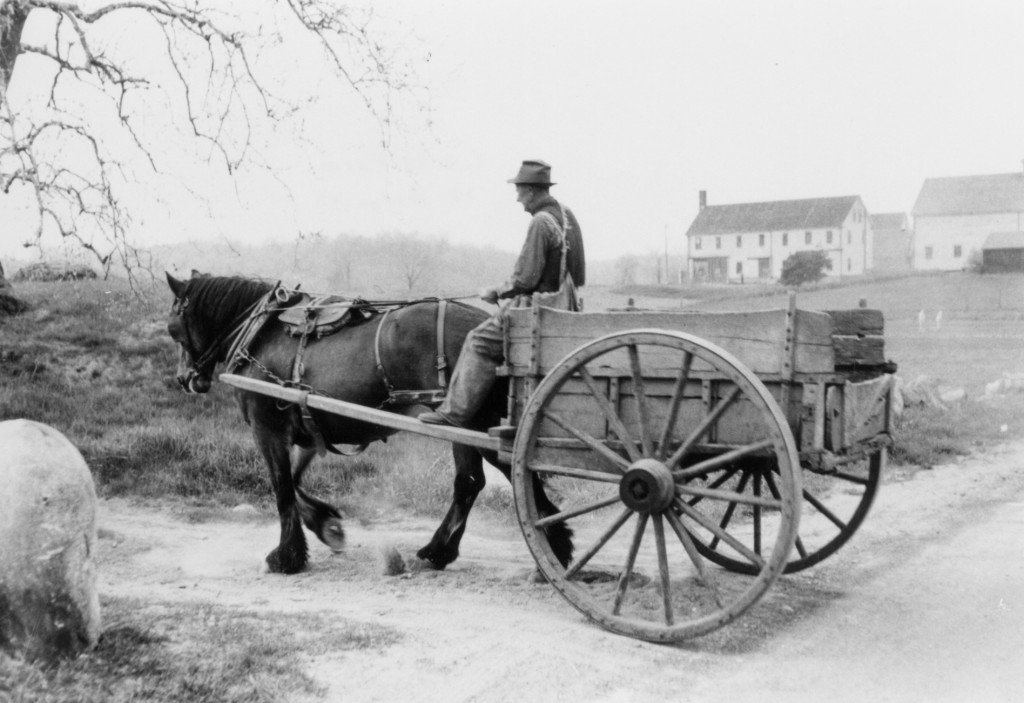




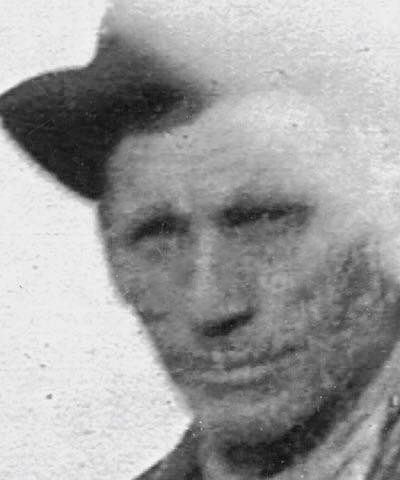
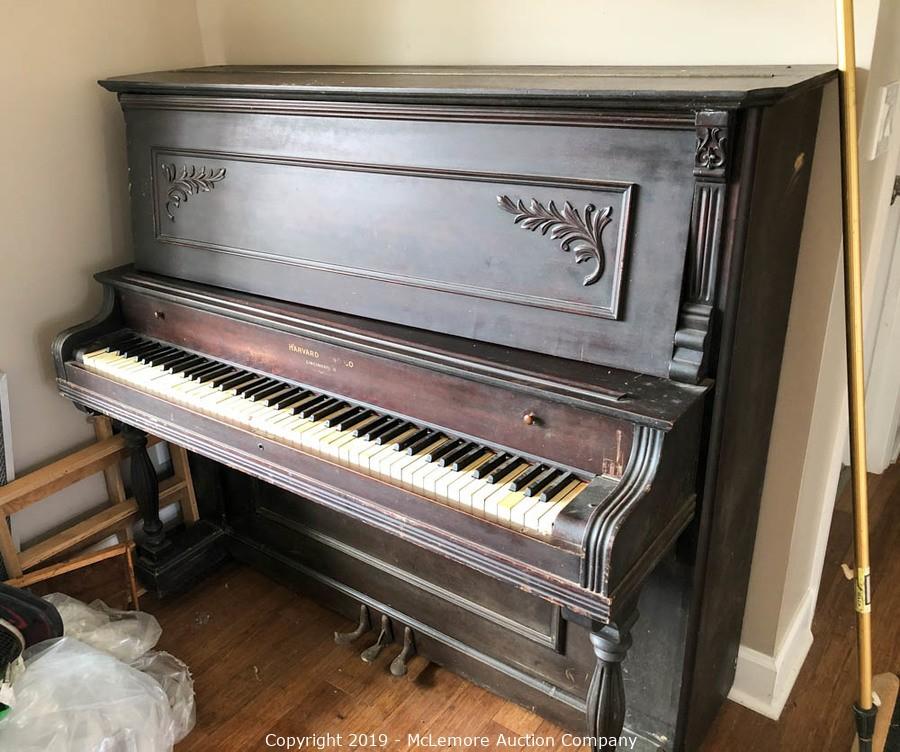

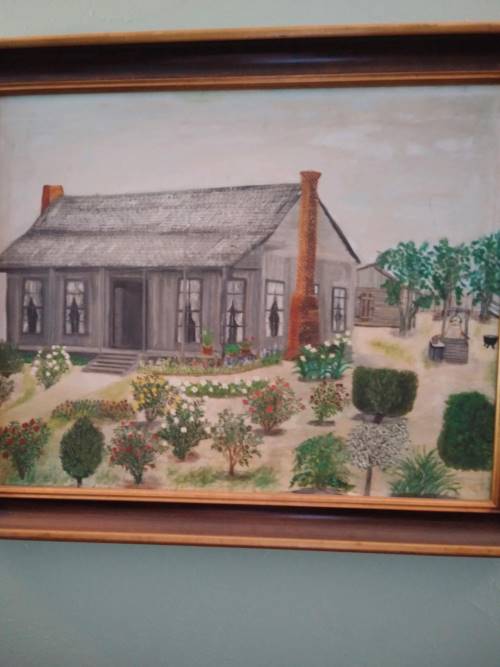
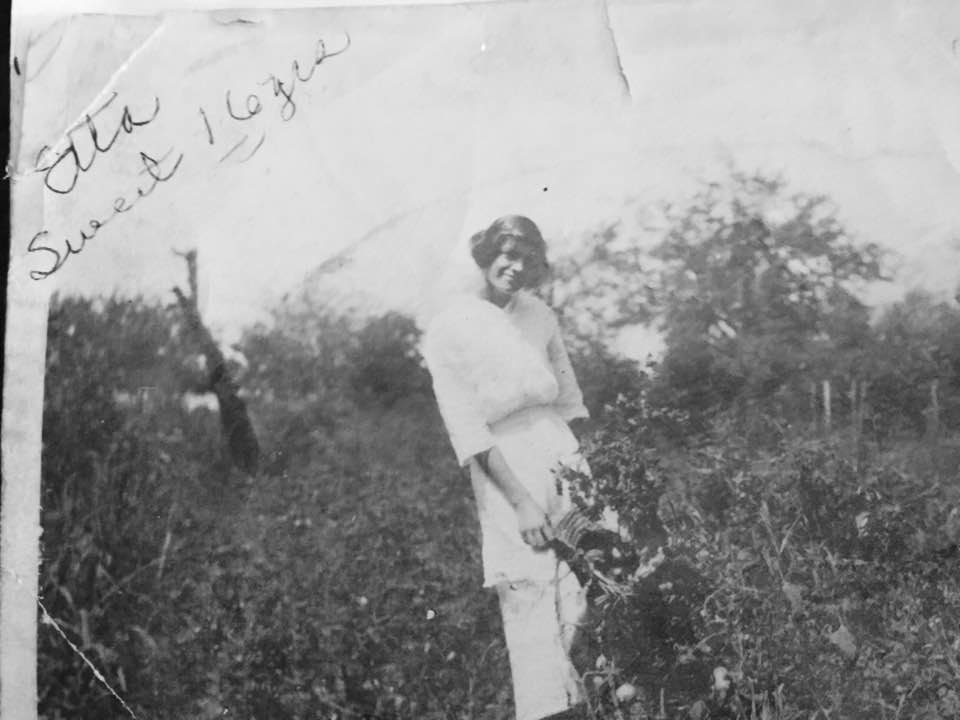


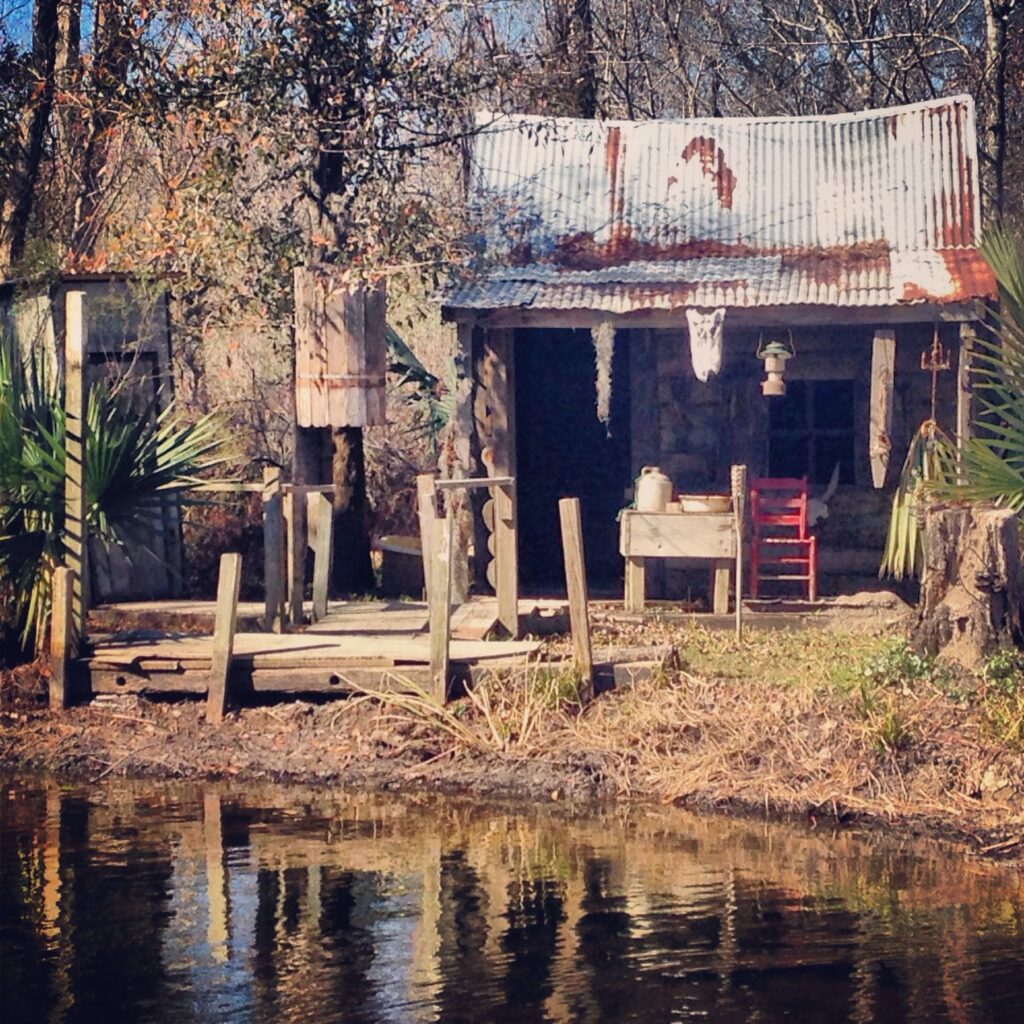


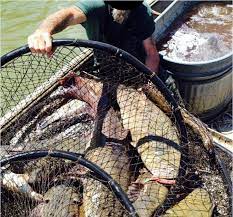


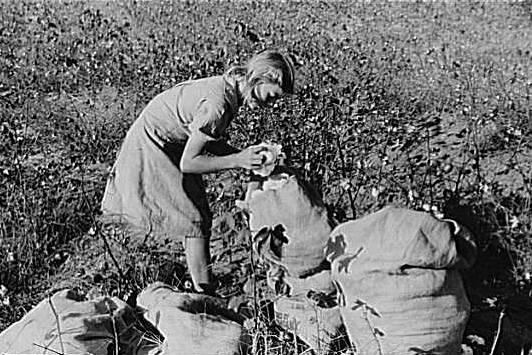
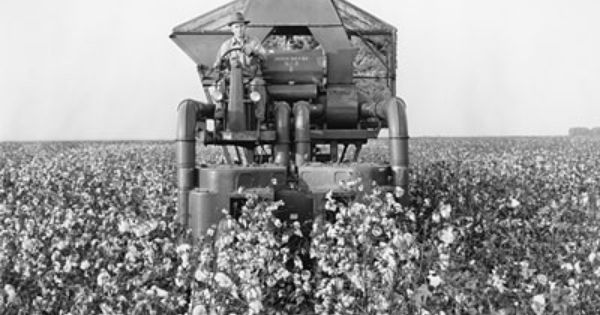



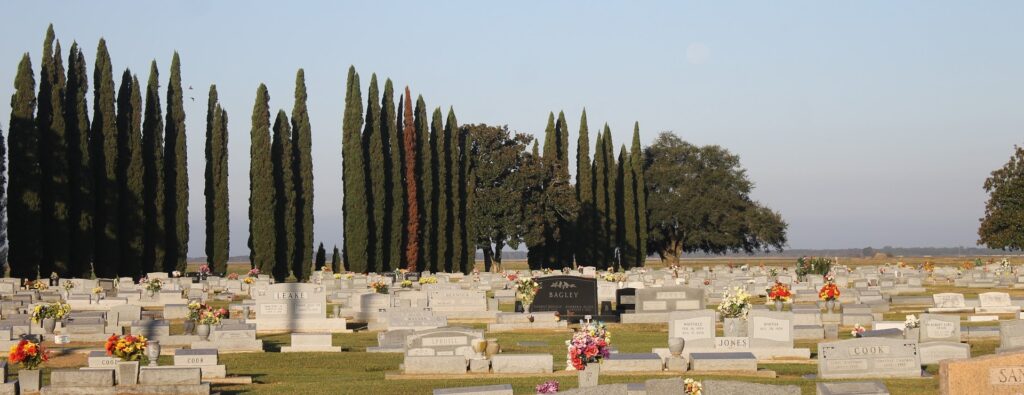
Recent Comments